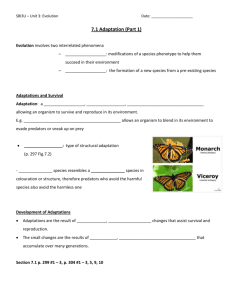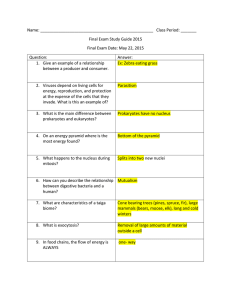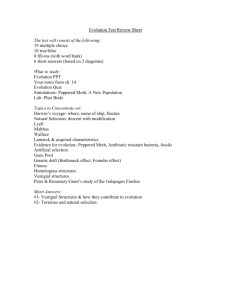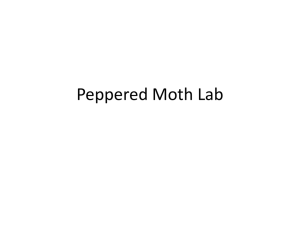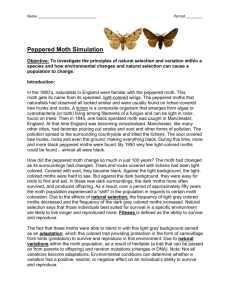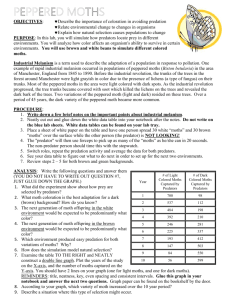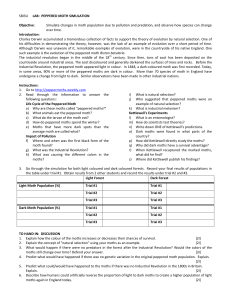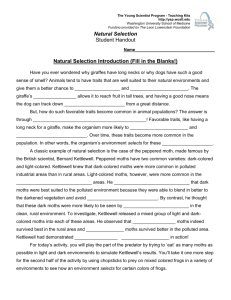Peppered Moth Lab
advertisement
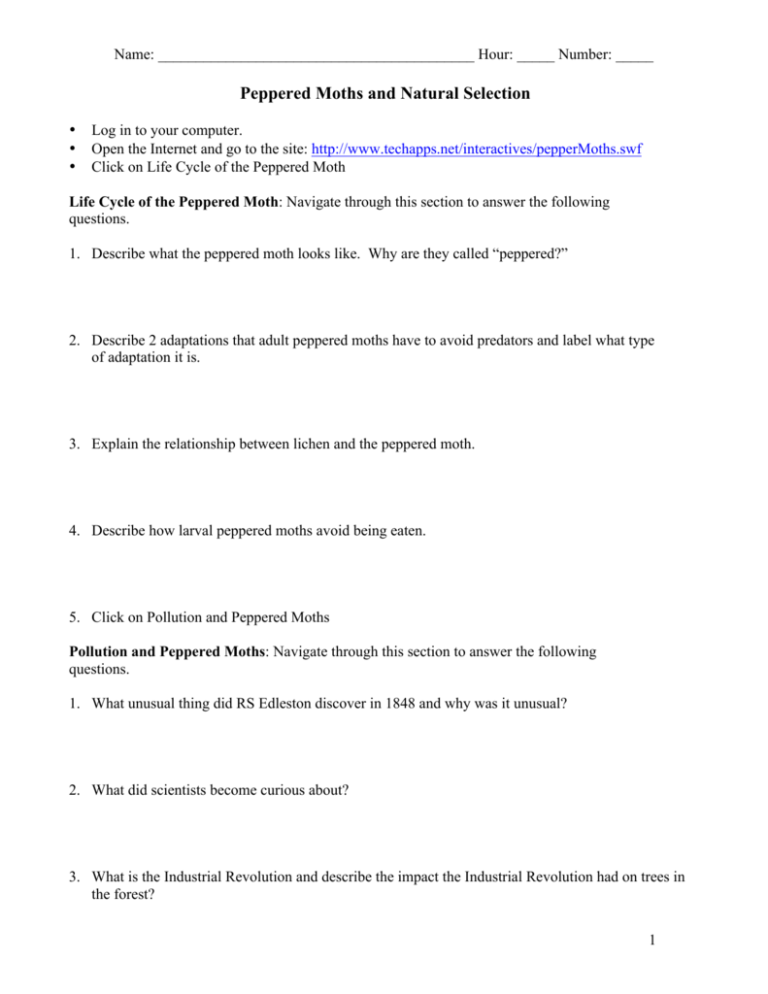
Name: __________________________________________ Hour: _____ Number: _____ Peppered Moths and Natural Selection • • • Log in to your computer. Open the Internet and go to the site: http://www.techapps.net/interactives/pepperMoths.swf Click on Life Cycle of the Peppered Moth Life Cycle of the Peppered Moth: Navigate through this section to answer the following questions. 1. Describe what the peppered moth looks like. Why are they called “peppered?” 2. Describe 2 adaptations that adult peppered moths have to avoid predators and label what type of adaptation it is. 3. Explain the relationship between lichen and the peppered moth. 4. Describe how larval peppered moths avoid being eaten. 5. Click on Pollution and Peppered Moths Pollution and Peppered Moths: Navigate through this section to answer the following questions. 1. What unusual thing did RS Edleston discover in 1848 and why was it unusual? 2. What did scientists become curious about? 3. What is the Industrial Revolution and describe the impact the Industrial Revolution had on trees in the forest? 1 Name: __________________________________________ Hour: _____ Number: _____ 4. Describe 2 ideas that scientists had about the moths color. 5. Explain how peppered moths get their color. 6. How does natural selection lead to changes in species? 7. Explain how peppered moths are an example of natural selection. 8. Click on Kettlewell’s Experiments. Kettlewell’s Experiments: Navigate through this section to answer the following questions. 1. Describe Dr. Kettlewell’s Experiments and how they proved that natural selection was the cause for change in moth coloration. 2. Which of Dr. Kettlewell's truths is not correct? Explain. 2 Name: __________________________________________ Hour: _____ Number: _____ Bird’s Eye View 1. Describe the starting conditions in the simulation. 2. What role will you play in the simulation? 3. Select “Light Forest” and eat as many moths as you can in 1 minute: a. Record the results: ________________% light colored moths b. _________________% dark colored moths. 4. Select “Dark Forest” and eat as many moths as you can in 1 minute: a. Record the results: ________________% light colored moths b. _________________% dark colored moths. 5. Create a bar graph for the Light Forest scenario and a bar graph for the Dark Forest scenario. In each graph be sure to represent initial and final population percentages for both light and dark moths. 3 Name: __________________________________________ Hour: _____ Number: _____ Analysis: 1. Think of one real-life predator/prey relationship (not birds and peppered moths). Below, write down the relationship you selected. 2. Describe how one characteristic of the prey population might change because of natural selection. 3. Explain how one characteristic of the predator population might change because of natural selection. 4 Name: __________________________________________ Hour: _____ Number: _____ 4. Explain why knowing about the process of natural selection adds more evidence and inference to support the theory of evolution. 5. Explain what biological evolution means using the following terms and ideas: adaptation, population, natural selection, variation, species, and mutation. Highlight the terms when you use them. 5



